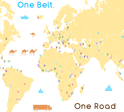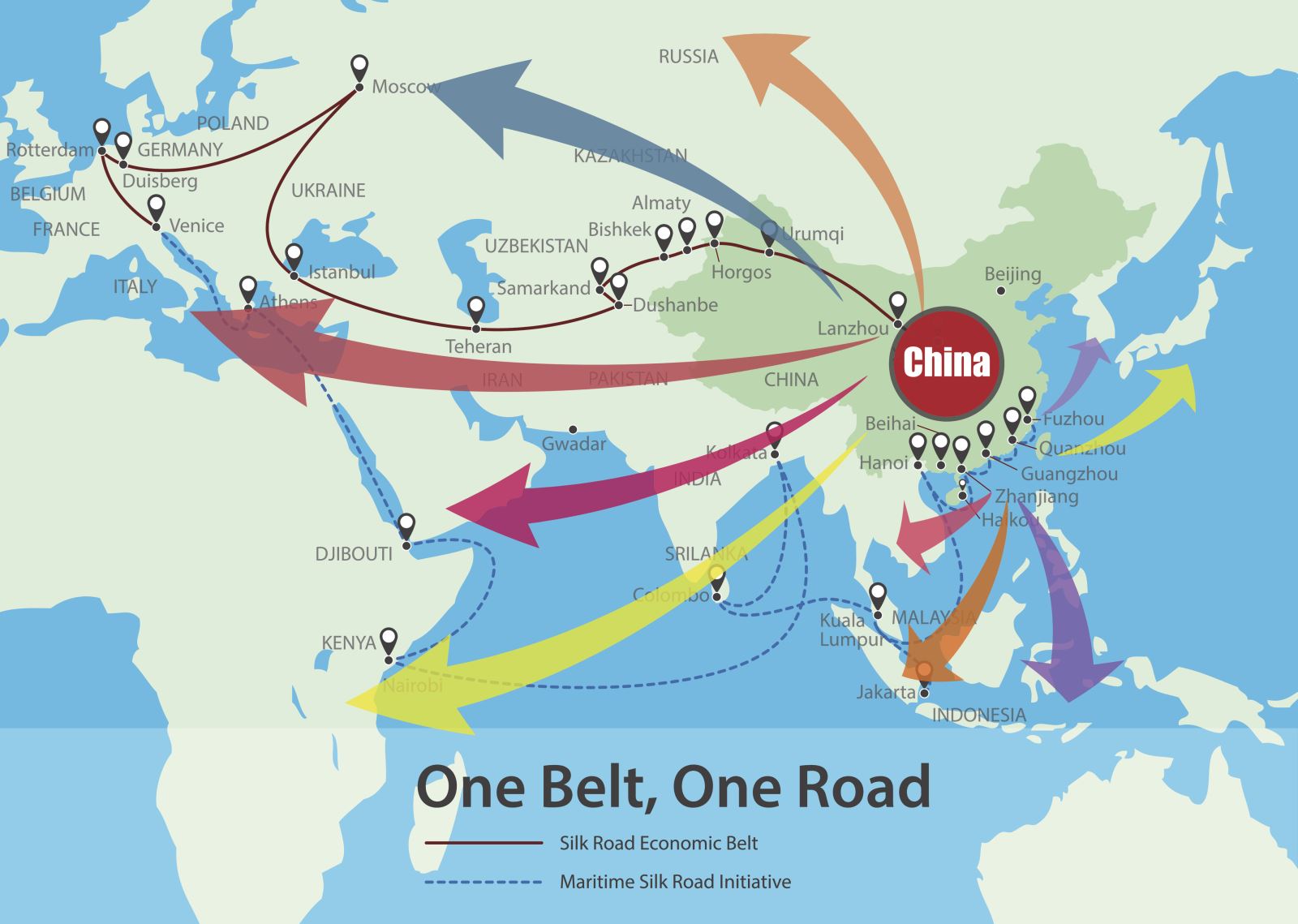
The "new silk roads": an evaluation essay
(1/4): A Chinese vision of globalization
What can be done with the financial surpluses? 2013 the decisive year
China itself wonders what would be the most effective use of these surpluses. Starting in 2013, by giving its citizens greater freedom to travel abroad, it managed to halve its current account surpluses. Another strategy is to move away from liquid but unprofitable US Treasury bills to the acquisition of foreign companies in all directions. These massive capital outflows made China the world's second-largest investor in 2016.
President Xi Jinping also launched in 2013 a very long-term, pharaonic, investment spree in order to speed up the development of connections between all regions of the world, while reviving and adapting the concept of the " Silk Roads ", the English translation of which was renamed the Belt and Road Initiative (BRI). This project pursues several objectives[1].First of all, to strengthen China's ties with its immediate Asian environment and beyond, and at the global level, to build a new world order to replace the one imposed by the West under the Bretton Woods agreements after the Second World War. Through this project, China is seeking to assert its leadership on the globalization process in the era of the digital revolution, defending multilateralism and adopting the benevolent hegemon position for decades to come.
An historical confrontation with the West
It may be remembered that China always thought of itself as the centre of the world until the West brutally proved her the contrary by imposing unequal treaties on it. With the Communist Revolution, China prepared its revenge first by trying to export its revolution to the developing world (in competition with the USSR) around the concept of “peaceful coexistence” symbolized by the Non-Aligned Movement. after Mao's death, Deng began a sharp shift in China's strategy in deciding to integrate itself into the world economic system as it is and adapting its economic structures according to the principle of socialism under a market-economy, under the sole authority of the CCP.
After replacing Taiwan at the World Bank and the IMF in 1980, China accelerated its integration into the world economy. It joined APEC (Asia-Pacific Economic Cooperation) in 1991. Following the Asian crisis of 1998, it joined South Korea and Japan in the Chiang Mai Initiative (CMI), a multilateral currency swap arrangement to manage short-term liquidity problems in the region. This agreement became multilateral under the name of Chiang Mai Initiative Multilateralisation (CMIM) Agreement in 2010 - involving the ASEAN countries - in order to reduce the dependence of Asian countries on the major international institutions (IMF and WB).
China's accession to the WTO (2001) and the major concessions she agreed[2] are the decisive sign of her commitment to the multinational rules of the Game[3].
Economic success is there, which reinforces China's commitment to multilateralism. Since then, China has increased the number of regional free trade agreements: 15 are signed and 11 are under negotiation. Not to mention the many partnership agreements signed with African countries.
Against China the United States goes through four phases:
- 1950-1972: confrontation with the Korean and Vietnamese wars, and the creation in 1954 of the SEATO (Southeast Asia Treaty Organization),
- 1972-1980: period of observation, pacified with the recognition of China by Nixon,
- 1980-2001: opening and negotiations leading to China's accession to the WTO,
- Since 2008, the United States oscillated between negotiation and confrontation.
Aware of the major consequences of China's rise, in 2011 Obama launched a policy known as the "Pivot to Asia", which is embodied in TPP (Trans-Pacific Partnership) a vast free trade agreement signed in early 2016 between 12 countries, excluding China. Trump gave up this ambitious strategy a launched a confrontation and designed China as a strategic adversary of the United States. The rejection of multilateralism led Trump to pull the United States out of the TPP and the Paris climate agreement. In so doing, he handed to China the leadership of trade multilateralism.
BRI : a variable geometry content
By launching this project, Xi Jinping is reviving a very ancient Chinese tradition of gigantic works that marked its history from the construction of the Great Wall to the Grand Canal that connects the south to the north of China for more than 1,700 kilometers. At the time of the Great Leap Forward, Mao thought of reviving gigantic hydroelectric dam projects on the Yangzi Jiang, but China did not have the necessary technical and human resources at the time. Finally, it was Li Peng, Prime Minister, who launched the work of the so-called Three Gorges Dam in 1992, with the approval, an exceptional thing in China, of only two-thirds of the votes in the National People's Congress. The dam is the world's largest hydroelectric power plant. Li Peng is also the one who, in 1996, launched the idea of the "new Silk routes", which was taken up in 2013 by Xi Jinping, who made it a major guide of his national and international policy.

It is difficult for foreign observers to understand the content of this ever-expanding project. In terms of geographical coverage, there has been a shift from a project aimed at improving the interconnection between Europe and Asia to a project extended to Australia, New Zealand, sub-Saharan Africa, the Maghreb and Latin American countries ; the land belt is joined by a maritime route through the China Sea, the Indian Ocean and along the African continent, and another route which projects through the Far North and the Arctic but which does not seem to have a great future[4].
Of course, financing and implementing the infrastructure projects ( roads, railways, seaports, industrial zones, electricity production, including many coal-fired power stations, Intercontinental and regional telecommunications, as well as many real estate and tourism projects), remain at the heart of the project. But they increasingly involve intangible investments ranging from research on new information technologies to the creation of universities, security systems, multiple brainstorming forums on globalization and international cooperation, which make the BRI a global project of globalization with Chinese standards.
Finally, the Silk Roads initiative is also a project consistent with the policy of strengthening the role of major Chinese state-owned enterprises that dominate the infrastructure sector[5]. This sector has been in a production overcapacity crisis since the end of the massive recovery plan that followed the global crisis of 2008. The BRI also reflects China's own land-use objectives. The aim is to redirect Chinese growth towards the less favored regions of western China[6] and, in general, to redirect World Economic Development towards Eurasia, a sort of circumvention strategy for the United States.
Jean-Raphaël Chaponnière is an associate researcher at Asia Centre and at Asia21
|
Retrouvez plus d'information sur le blog du CEPII. © CEPII, Reproduction strictement interdite. Le blog du CEPII, ISSN: 2270-2571 |
|||
|

